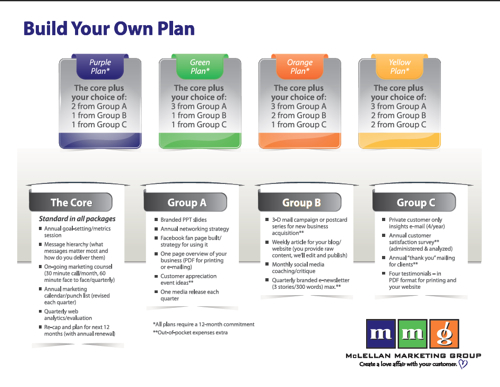July 28, 2011

…How do you balance your personal & company brand?
Earlier this week, we explored the idea of how your personal brand influences and sometimes becomes your company’s brand. If you are an author, solo consultant or solopreneur that can actually work to your advantage, as we discussed.
On the flip side, if you’ve got an entire organization behind you (whether it’s 4 employees or 400) then having a very prominent brand can be problematic.
Why?
Because you get into the sticky situation of people wanting to hire YOU not your firm. Which means your company can only grow to the peak of your own capacity. And potential customers will be disappointed if they get assigned to one of your co-workers rather than being excited to be connected with an organization as smart as yours.
So how do you combat that? You certainly don’t want to douse your own brand and when pointed in the right direction, your brand’s reach can extend to serve your entire company. But how do you make sure your personal brand doesn’t overshadow the entire team?
Only the best: If you’re in the position to influence or control the hiring, you’re going to have to guard against settling. You will need strong individuals who perform at the top of their game every day. They also have to be ready to stand in tide of your brand and hold their own. Be candid about the situation and help them define and build their own brands that compliment yours and the company’s.
You’re also going to have to recruit people who are committed to always bettering themselves: And part of your role is going to need to be coach/mentor. We give a lot of lip service to the idea of hiring people who are smarter than ourselves, but you’re really going to have to walk that out. How can you truly motivate and support them getting even better?
Celebrate your team: Get out of the spotlight when you can. If you can turn it to one of your teammates, all the better. You’re the team’s biggest and most vocal cheerleader. Do it internally and do it with clients and prospects. Encourage them to take leadership positions in the community, especially in areas where you have not already been. Let them carve out their own path and be on the sidelines applauding the entire time.
Think differently about your products/services: Odds are your strong personal brand was borne out of you being very good at something. And you probably built your company around that core competency, as well you should.
Let’s say you are the best cupcake maker in the world. Your cupcakes make grown men weep. And maybe there’s no way any of your very able bakers are going to be able to duplicate your cupcakes. That’s okay….you keep making the cupcakes. And if you want — your business can only sell cupcakes. But that means you have to always be in the kitchen. And your team can’t grow and enjoy basking in their own light.
Why not examine both what your customers need and where you team has some unique talents. Perhaps there are some complimentary offerings that they could own. Maybe one of your staff makes killer expresso or quiches.
Even within a niched company like a law firm specializing in taxes, there are nuances or levels that are worth exploring. Help them find their own niche that can flourish alongside yours.
In the end, it’s a balancing act.
Every company would like to have a charismatic leader who is well known and well respected. So you don’t want to do anything to diminish that. But you do want to elevate the rest of your crew so that all of you can build a company that exists and succeeds beyond your own sphere of influence and your 24 hours in a day.
For those of you who have a strong presence or brand — how do you create the balance for your organization?
More
 You know…sometimes we make things so much more complicated than they need to be. Do you want to own or work for a company with longevity, a strong reputation and customers who are your best advertising?
You know…sometimes we make things so much more complicated than they need to be. Do you want to own or work for a company with longevity, a strong reputation and customers who are your best advertising?




















